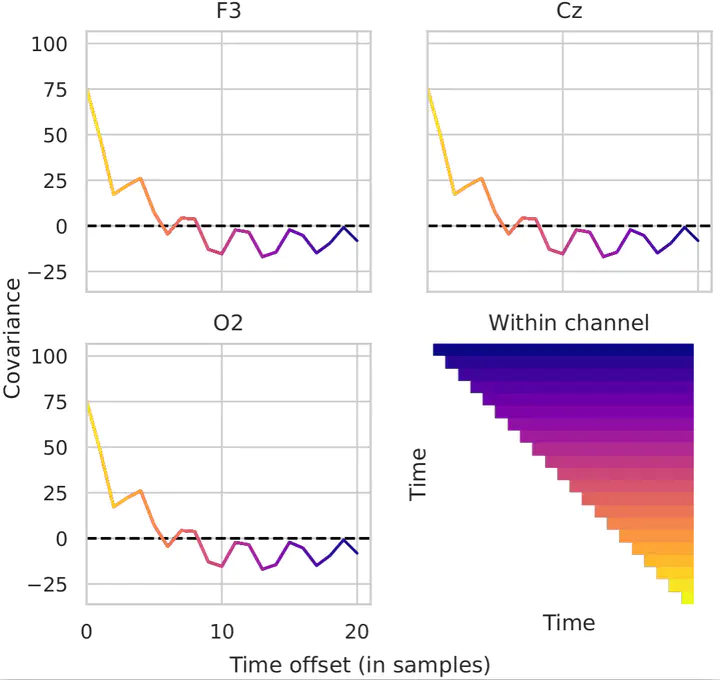Influence of Tapering Strategies upon Block-Toeplitz LDA

For many machine learning methods in BCI, covariance matrices (more precisely: sample covariance matrix, SCM) are used to describe, how background brain signals auto-covary over time within a single measured EEG channel, and also how the signals of multiple channels cross-covary that are distributed over the scalp. A SCM typically needs to be estimated from training data, and if not a large number of training data points are available (unfortuntely this is a common problem in BCI), its entries are estimated poorly. Poorly estimated SCMs lead to a decreased performance, e.g., of classification models like linear discriminant analysis (LDA) which rely on both, accurate class mean estimates and SCMs. To improve the quality of an empirically estimated covariance matrix, different regularization methods have been proposed. A very recent one, block-Toeplitz regularization [1], makes rather strong domain-specific assumptions about the measured EEG signal, as it expects stationary signals (at least within short time windows, so-called epochs) and assumes, that covariance wears off with longer time distances between samples. Recently, a “block-Toeplitz LDA” [1] method for classifying event-related potential (ERP) features obtained in BCIs has shown a huge improvement over the state of the art. To account for the second assumption (decay of covariance for larger time intervals), the authors have used a simple, linear tapering function on the covariance matrix, which reduces the influence of matrix entries, that represent larger time distances. However, this simple linear tapering may be sub-optimal.
Task
This thesis shall investigate for a collection of ERP datasets, if the classification accuracy of a block-Toeplitz LDA can be improved by applying different tapering functions for the regularization of the block-Toeplitz regularized covariance matrix. In addition to empirical evaluations, the theory of different tapering options is to be considered.
[1] Sosulski, J., & Tangermann, M. (2022). Introducing block-Toeplitz covariance matrices to remaster linear discriminant analysis for event-related potential brain–computer interfaces. Journal of Neural Engineering, 19(6), 066001. https://doi.org/10.1088/1741-2552/ac9c98
Skills required
- BCI background by accomplished course SOW-BKI 323 or SOW-MKI 74
- Strong mathematical background and intuition
- Machine learning
- Good programming skills in Python (familiarity with numpy, sklearn, MNE)
- Experience in ERP data analysis